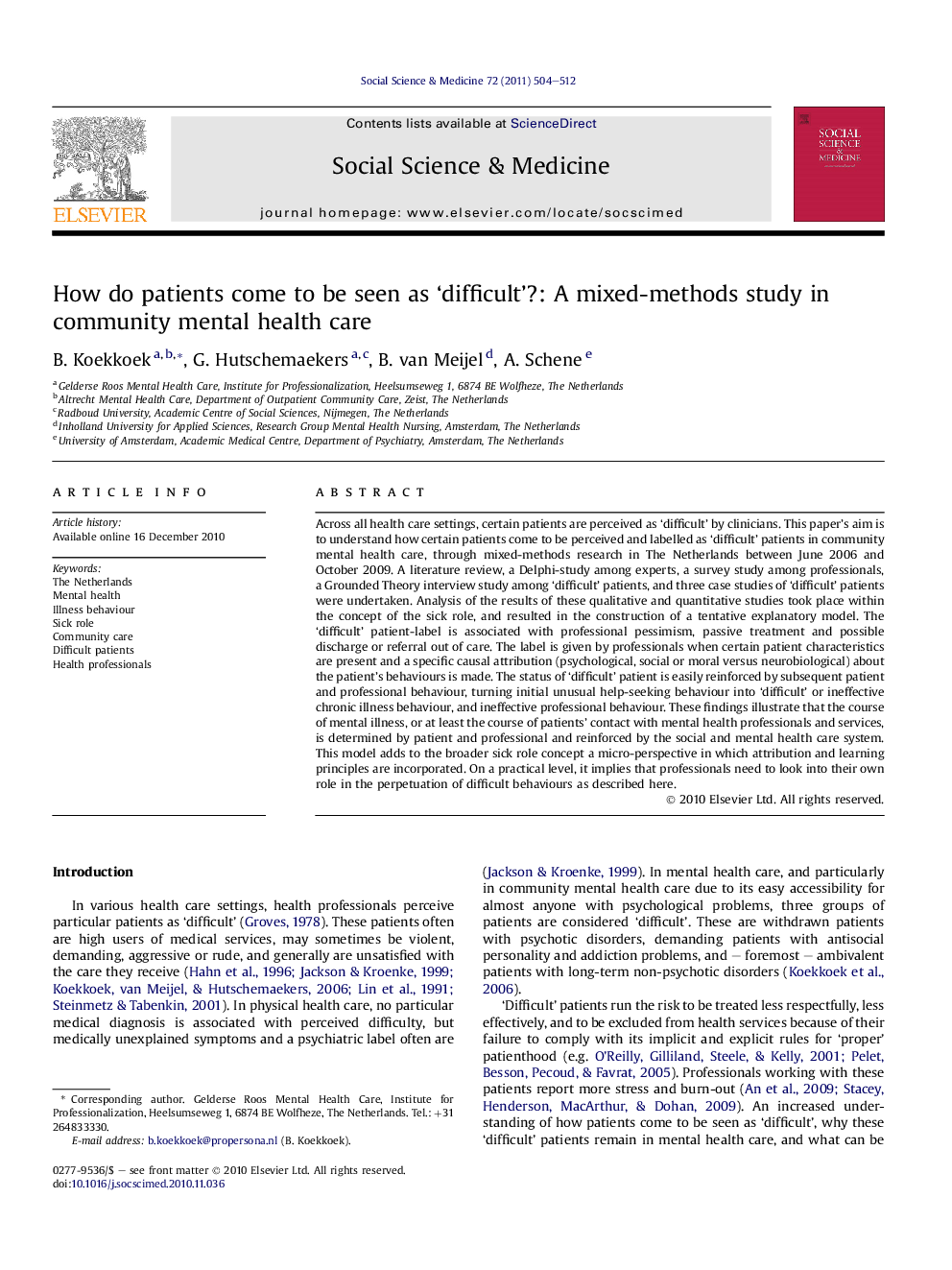| کد مقاله | کد نشریه | سال انتشار | مقاله انگلیسی | نسخه تمام متن |
|---|---|---|---|---|
| 952877 | 927550 | 2011 | 9 صفحه PDF | دانلود رایگان |

Across all health care settings, certain patients are perceived as ‘difficult’ by clinicians. This paper’s aim is to understand how certain patients come to be perceived and labelled as ‘difficult’ patients in community mental health care, through mixed-methods research in The Netherlands between June 2006 and October 2009. A literature review, a Delphi-study among experts, a survey study among professionals, a Grounded Theory interview study among ‘difficult’ patients, and three case studies of ‘difficult’ patients were undertaken. Analysis of the results of these qualitative and quantitative studies took place within the concept of the sick role, and resulted in the construction of a tentative explanatory model. The ‘difficult’ patient-label is associated with professional pessimism, passive treatment and possible discharge or referral out of care. The label is given by professionals when certain patient characteristics are present and a specific causal attribution (psychological, social or moral versus neurobiological) about the patient’s behaviours is made. The status of ‘difficult’ patient is easily reinforced by subsequent patient and professional behaviour, turning initial unusual help-seeking behaviour into ‘difficult’ or ineffective chronic illness behaviour, and ineffective professional behaviour. These findings illustrate that the course of mental illness, or at least the course of patients’ contact with mental health professionals and services, is determined by patient and professional and reinforced by the social and mental health care system. This model adds to the broader sick role concept a micro-perspective in which attribution and learning principles are incorporated. On a practical level, it implies that professionals need to look into their own role in the perpetuation of difficult behaviours as described here.
Research highlights
► Potentially ‘difficult’ patients have unclear symptoms, challenging interpersonal behaviours, and various social problems.
► Causal attributions by professionals determine whether a potentially ‘difficult’ patient truly becomes labelled as such.
► Once given, the label ‘difficult’ increases ineffective behaviours of both patients and professionals.
► Patients and professionals get caught up in a vicious cycle of ineffective behaviours, for which the patient is blamed.
Journal: Social Science & Medicine - Volume 72, Issue 4, February 2011, Pages 504–512